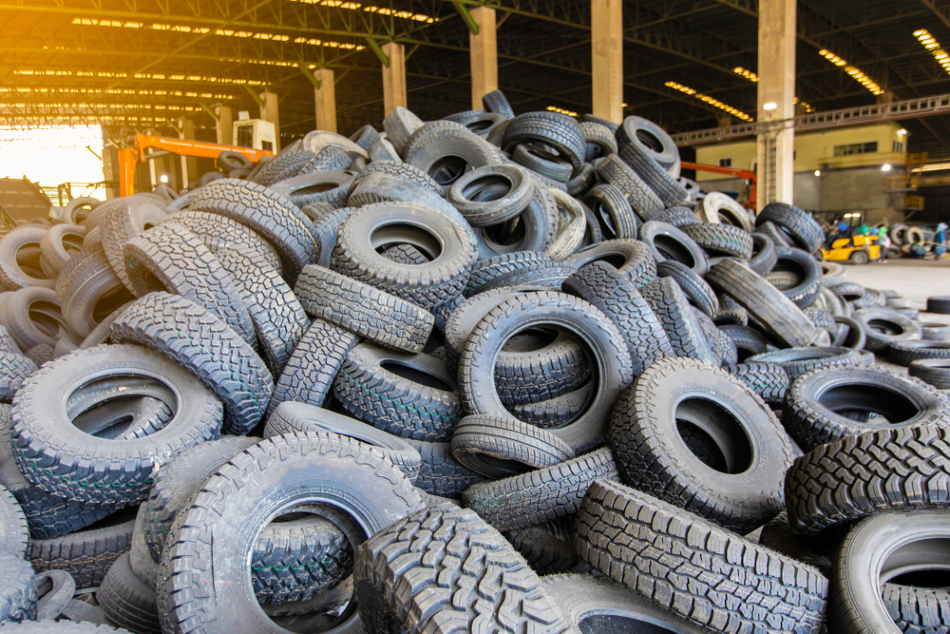Jan 17 2013

Image Credit: Mr.B-king/Shutterstock.com
Article updated on 18/02/20 by Susha Cheriyadath
Pyrolysis is a process of chemically decomposing organic materials at elevated temperatures in the absence of oxygen. The process typically occurs at temperatures above 430 °C (800 °F) and under pressure. It simultaneously involves the change of physical phase and chemical composition and is an irreversible process. The word pyrolysis is coined from the Greek words "pyro" which means fire and "lysis" which means separating.
Pyrolysis is commonly used to convert organic materials into a solid residue containing ash and carbon, small quantities of liquid and gases. Extreme pyrolysis, on the other hand, yields carbon as the residue and the process is called carbonization. Unlike other high-temperature processes like hydrolysis and combustion, pyrolysis does not involve reaction with water, oxygen or other reagents. However, as it is practically not possible to achieve an oxygen- free environment, a small amount of oxidation always occurs in any pyrolysis system.
Types of Pyrolysis Reactions
There are three types of pyrolytic reactions differentiated by the processing time and temperature of the biomass.
Slow Pyrolysis
Slow pyrolysis is characterized by lengthy solids and gas residence times, low temperatures and slow biomass heating rates. In this mode, the heating temperatures ranges from 0.1 to 2 °C (32.18 to 35.6 °F) per second and the prevailing temperatures are nearly 500°C (932°F). The residence time of gas may be over five seconds and that of biomass may range from minutes to days.
During slow pyrolysis, tar and char are released as main products as the biomass is slowly devolatilized. Repolymerization/recombination reactions occur after the primary reactions take place.
Flash Pyrolysis
Flash pyrolysis occurs at rapid heating rates and moderate temperatures between 400 and 600 °C (752 and 1112 °F). However, the vapor residence time of this process is less than 2s. Flash pyrolysis produces fewer amounts of gas and tar when compared to slow pyrolysis.
Fast Pyrolysis
This process is primarily used to produce bio-oil and gas. During the process, biomass is rapidly heated to temperatures of 650 to 1000 °C (1202 to 1832 °F) depending on the desired amount of bio-oil or gas products. Char is accumulated in large quantities and has to be removed frequently.
Microwave Pyrolysis
Fast pyrolysis has been shown to benefit from the use of microwave heating. Biomass typically absorbs microwave radiation very well, making heating of the material highly efficient - just like microwave heating of food, it can reduce the time taken to initiate the pyrolysis reactions, and also greatly reduces the energy required for the process. Because microwave heating can initiate pyrolysis at much lower overall temperatures (sometimes as low as 200-300 °C), it has been found that the bio-oil produced contains higher concentrations of more thermally labile, higher-value chemicals, suggesting that microwave bio-oil could be used as a replacement to crude oil as a feedstock for some chemical processes.
The Types of Pyrolysis Reactors Used in the Industry
Some of the reactors used in the pyrolysis process include the following:
Bubbling Fluidized Bed Pyrolyzers
Fluidized beds are generally simple to construct and design when compared to other reactor types. Bubbling fluidized bed pyrolyzers have large heat storage capacity, better temperature control, excellent heat transfer characteristics, and better gas-solids contact. In this pyrolyzer, the residence time of vapors and solids are controlled by the fluidizing gas flow rate. During the pyrolysis reaction, char acts as a catalyst in cracking vapors. Char is finally collected by entrainment processes.
Circulating Fluid Beds and Transported Bed
Circulating fluidized bed pyrolyzers have similar characteristics as that of bubbling bed pyrolyzers excluding that the residence time of vapors and char is faster due to higher gas velocities. These pyrolyzers have better gas-solid contact, high processing capacity and potential to deal with cohesive solids that might otherwise be hard enough to fluidize in bubbling fluidized beds.
Ablative Pyrolyzer
The ablative pyrolyzer, on the other hand, was designed so that the heat transferred from a hot reactor wall softens the feedstock under pressure. Large feedstock particles can be pyrolyzed in this pyrolyzer as the reaction rates are not influenced by heat transfer via the biomass particle. These pyrolyzers ensure high relative motion between the reactor wall and the particle and high pressure of the particle on the hot reactor wall. It avoids the need of inert gas and hence its processing equipment is small and the reaction system is more intense.
What are the Advantages of Pyrolysis?
The key benefits of pyrolysis include the following:
- It is a simple, inexpensive technology for processing a wide variety of feedstocks.
- It reduces waste going to landfill and greenhouse gas emissions.
- It reduces the risk of water pollution.
- It has the potential to reduce the country’s dependence on imported energy resources by generating energy from domestic resources.
- Waste management with the help of modern pyrolysis technology is inexpensive than disposal to landfills.
- The construction of a pyrolysis power plant is a relatively rapid process.
- It creates several new jobs for low-income people based on the quantities of waste generated in the region, which in turn provides public health benefits through waste clean up.
Applications of Pyrolysis
Some of the major applications of pyrolysis include the following:
- It is widely used in the chemical industry to produce methanol, activated carbon, charcoal and other substances from wood.
- Synthetic gas produced from the conversion of waste using pyrolysis can be used in gas or steam turbines for producing electricity.
- A mixture of stone, soil, ceramics, and glass obtained from pyrolytic waste can be used as a building material - construction slag or for filling landfill cover liners.
- It plays a major role in carbon-14 dating and mass spectrometry.
- It is also used for several cooking procedures like caramelizing, grilling, frying, and baking.
References and Further Reading